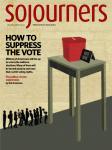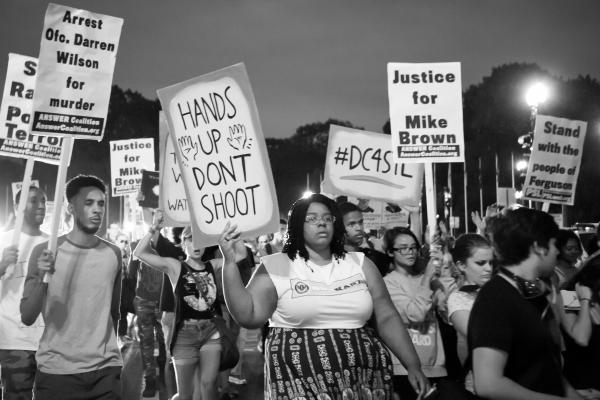ON AUG. 9, Michael Brown, an unarmed black teenager, was shot to death by Ferguson, Mo., police officer Darren Wilson. A collective groan was let out across social networks—people began the lament “Not again.”
Just four days prior, John Crawford III, a 21-year-old black man, had been gunned down by police in a Walmart in suburban Dayton, Ohio, without warning, while shopping for a BB gun. A few weeks earlier, Eric Garner, an African-American man, was choked to death by a New York City police officer.
For young black men, each incident is a reminder of how easily our lives can be taken away by police aggression. For the people in Ferguson, however, over-policing is all too familiar. In a city where 67 percent of the residents are black, there are only three black police officers on a force of 53.
A 2013 report from the Missouri attorney general’s office revealed just how bad relations are between officers and black citizens. Out of the 5,384 traffic stops made last year by the Ferguson Police Department, 86 percent of them targeted black drivers. Black drivers were searched and arrested at nearly twice the rate of white drivers, although contraband was found at a rate 13 percent less than that of white drivers.
The shooting death of Michael Brown was the tipping point. The gathering anger and frustration bubbling on the streets of Ferguson from an abusive and militarized police force finally erupted.
What followed was astonishing. A generation often criticized for its supposed apathy toward social issues organized and protested while being tear-gassed and shot at with rubber bullets. Peaceful demonstrators took to the streets each night to demand the arrest of Darren Wilson and were met with an aggressive response by law enforcement. Police used dogs, tear gas, and stun grenades to disperse the crowds exercising their right to assemble—events eerily similar to ones decades ago during the civil rights movement.
I visited Ferguson two weeks after Brown’s murder. Lauren Allen, a 24-year-old doctoral student at Howard University, organized a bus trip from D.C. with 40 young people. We noticed the heavy police presence as soon as we stepped off the bus. By that time the National Guard had been called off and fewer protesters were in the streets at night, but the atmosphere was tense.
We met with St. Louis Alderman Antonio French, whose tweets and Vine videos had helped thrust Ferguson into the national spotlight. French began a voter registration campaign, with the hashtag #HealSTL, with the goal of ensuring that Ferguson’s civic institutions reflect the city’s racial makeup. (Ferguson’s mayor is white, as are five of the six members of the city council and six of the seven members of the school board.) We canvassed neighborhoods as part of the voter registration campaign, just as generations before us had done.
As a child I was taught in school a rather romanticized version of the civil rights movement. Perhaps in my lifetime, I thought, Martin Luther King’s dream would become a reality. As I grew older, I realized that King’s dream—and the dream of my parents and their parents—was a dream long deferred.
What happens to a dream deferred, as Langston Hughes asked in his poem “Harlem”? Does a black unemployment rate more than double that of white Americans cause this dream to sag “like a heavy load?” Does the wipeout of economic gains made by the black middle class over the last 30 years cause it to “crust and sugar over—like a syrupy sweet?” Does the grotesque underfunding of inner-city schools cause this dream to “stink like rotten meat?” Does the killing of a black man every 28 hours by a police officer, security guard, or self-appointed vigilante cause this dream to “dry up like a raisin in the sun” or like the body of Michael Brown left to bake in the sweltering heat for nearly four hours after he was executed? Or does it explode?
In The Wretched of the Earth, Frantz Fanon wrote, “Each generation must out of relative obscurity discover its mission, fulfill it, or betray it.” For my generation, our mission is clear.

Got something to say about what you're reading? We value your feedback!
